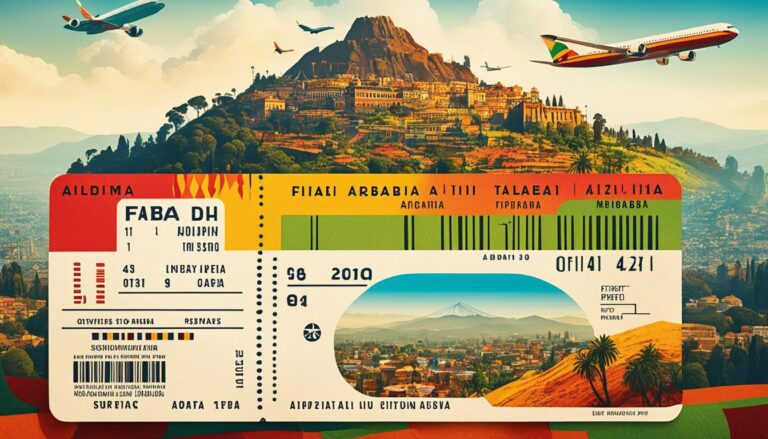What Happened With Ethiopia And Eritrea?
Understanding the Conflict Between Ethiopia and Eritrea
Ethiopia and Eritrea, two neighboring countries in the Horn of Africa, have a long history of conflict that escalated into a full-scale war. The roots of the conflict can be traced back to border disputes and issues related to self-determination and independence. The Eritrean War of Independence, which lasted from 1961 to 1991, resulted in Eritrea gaining independence from Ethiopia. However, tensions continued to simmer over the exact demarcation of the border between the two countries.
The situation reached a boiling point in 1998 when clashes broke out between Ethiopian and Eritrean forces in the border town of Badme. What started as a minor skirmish quickly escalated into a full-blown war, leading to significant loss of life and displacement of civilians on both sides. The conflict lasted until 2000 when a peace agreement was signed in Algiers, Algeria. Despite the peace deal, the border dispute remained unresolved, and both countries struggled to implement the terms of the agreement effectively.
The conflict had far-reaching implications for both countries, causing economic hardship, loss of life, and strained relations between the two nations. The international community, including the United Nations and the African Union, made various attempts to mediate and facilitate peace talks between Ethiopia and Eritrea. However, progress was slow, and the unresolved border issue continued to be a source of tension and instability in the region.
In 2018, a historic breakthrough occurred when Ethiopian Prime Minister Abiy Ahmed and Eritrean President Isaias Afwerki signed a peace agreement, formally ending the state of war between the two countries. The agreement led to the reopening of diplomatic relations, the reestablishment of phone lines, and the opening of borders for the free movement of people and goods. The newfound peace between Ethiopia and Eritrea brought hope for stability and cooperation in the region after decades of hostility.
Despite the progress made in recent years, challenges remain in fully normalizing relations between Ethiopia and Eritrea. Issues such as the final demarcation of the border, the return of displaced populations, and the establishment of lasting peace and security continue to require attention and concerted efforts from both sides. However, the positive steps taken towards reconciliation demonstrate the potential for a brighter future for the people of Ethiopia and Eritrea.
Historical Background of the Ethiopia-Eritrea Relationship
The history of the relationship between Ethiopia and Eritrea is complex and deeply rooted. The two nations, located in the Horn of Africa, share historical, cultural, and linguistic ties, but their interactions have often been marred by tensions and conflicts.
One of the key turning points in their history was the federation between Ethiopia and Eritrea in 1952. At that time, Eritrea was a former Italian colony under British administration following World War II. The federation granted Eritrea a degree of autonomy, but this arrangement was short-lived. In 1962, Emperor Haile Selassie of Ethiopia dissolved the federation, leading to the annexation of Eritrea as Ethiopia’s fourteenth province.
The annexation sparked a decades-long armed struggle for independence by Eritrean separatists. The Eritrean War of Independence, which lasted from 1961 to 1991, resulted in Eritrea gaining independence following Ethiopia’s Marxist government’s overthrow. Eritrea officially became an independent nation in 1993 after a UN-supervised referendum.
Despite gaining independence, tensions between the two nations persisted. In 1998, a border dispute over the town of Badme escalated into a full-scale war between Ethiopia and Eritrea. The conflict, which lasted until 2000, resulted in tens of thousands of casualties on both sides and left deep scars on the relationship between the two countries.
International efforts, particularly led by the United Nations, were instrumental in brokering a ceasefire between Ethiopia and Eritrea in December 2000. The peace agreement known as the Algiers Agreement aimed to resolve the border dispute and establish a mechanism for demarcating the boundary.
However, implementation of the Algiers Agreement faced challenges, with both countries accusing each other of violating the terms. The border remained heavily militarized, and diplomatic relations between Ethiopia and Eritrea were severed for nearly two decades.
In 2018, a historic breakthrough occurred when Ethiopian Prime Minister Abiy Ahmed and Eritrean President Isaias Afwerki signed a joint declaration of peace and friendship, signaling the end of hostilities. The reestablishment of diplomatic relations, reopening of borders, and resumption of direct flights between the two countries marked a new chapter in their relationship after years of conflict.
Today, while the peace between Ethiopia and Eritrea holds, challenges remain in fully normalizing relations, addressing humanitarian issues, and implementing the border demarcation outlined in the Algiers Agreement. The historical background of the Ethiopia-Eritrea relationship serves as a reminder of the complexities and struggles that have defined their interactions over the years.
International Involvement and Peace Efforts in Resolving the Conflict
The conflict between Ethiopia and Eritrea has attracted significant international attention due to its impact on regional stability and security in the Horn of Africa. Several key players and organizations have been involved in peace efforts aimed at resolving the long-standing dispute between the two countries.
One of the most notable international peace initiatives was led by the United Nations. In 2000, the UN Security Council passed Resolution 1298, which called for an immediate ceasefire and established the United Nations Mission in Ethiopia and Eritrea (UNMEE) to monitor the truce between the two nations. UNMEE played a crucial role in overseeing the implementation of the Algiers Agreement, which formally ended the hostilities between Ethiopia and Eritrea in December 2000.
In addition to the UN, other international organizations such as the African Union (AU) and the Intergovernmental Authority on Development (IGAD) have been actively involved in peace efforts in the region. The AU played a mediating role in facilitating dialogue between Ethiopian and Eritrean leaders, while IGAD provided support for the implementation of the peace agreement.
Furthermore, several countries have also played a significant role in supporting peace initiatives between Ethiopia and Eritrea. The United States, the European Union, and various other nations have provided diplomatic backing and financial assistance to help both countries overcome their differences and build a lasting peace.
Despite these international efforts, achieving lasting peace between Ethiopia and Eritrea has been challenging. Border disputes, disagreements over the implementation of the Algiers Agreement, and domestic political issues have all posed significant obstacles to reconciliation between the two nations.
However, there have been some recent positive developments in the relationship between Ethiopia and Eritrea. In 2018, Ethiopian Prime Minister Abiy Ahmed and Eritrean President Isaias Afwerki signed a historic peace agreement, formally ending two decades of hostility and opening up new opportunities for cooperation and economic integration.
While international involvement and peace efforts have played a crucial role in resolving the conflict between Ethiopia and Eritrea, sustaining peace will require continued commitment from both countries as well as ongoing support from the international community.
Impact of the Ethiopia-Eritrea Conflict on the Region
The conflict between Ethiopia and Eritrea, which lasted from 1998 to 2000, had significant repercussions not only for the two countries involved but also for the broader region of the Horn of Africa. The war resulted in a death toll estimated to be around 70,000 to 100,000 people, making it one of the deadliest interstate conflicts in Africa post-World War II.
One of the most profound impacts of the Ethiopia-Eritrea conflict was the strain it placed on regional stability. The hostilities disrupted trade routes and strained diplomatic ties among neighboring countries. This instability had ripple effects on the entire region, leading to increased militarization and economic hardships. The conflict also exacerbated existing tensions and rivalries, making the Horn of Africa a volatile and unpredictable area.
Furthermore, the Ethiopia-Eritrea conflict had humanitarian consequences that extended beyond the borders of the two belligerent nations. The war created a refugee crisis, with hundreds of thousands of people fleeing their homes to escape the violence. This situation placed immense pressure on neighboring countries that were already grappling with their internal challenges, such as limited resources and political instability.
Moreover, the protracted nature of the conflict resulted in a diversion of resources from much-needed development projects to military expenditures. This diversion hindered economic growth and social progress in both Ethiopia and Eritrea, contributing to long-term challenges such as poverty, unemployment, and inadequate infrastructure.
In addition to the immediate impact on regional stability and humanitarian conditions, the Ethiopia-Eritrea conflict also reshaped geopolitical dynamics in the Horn of Africa. The involvement of external actors and interests complicated the resolution process and further deepened divisions within the region. The conflict served as a stark reminder of the fragility of peace in Africa and the importance of addressing grievances through dialogue and diplomacy.
Despite the signing of a peace agreement in 2000 and the subsequent establishment of a boundary commission to demarcate the border between Ethiopia and Eritrea, tensions between the two countries persist. The legacy of the conflict continues to cast a shadow over the region, underscoring the need for sustained international engagement and efforts to promote reconciliation and stability in the Horn of Africa.
Current Relations Between Ethiopia and Eritrea
After decades of conflict, the relationship between Ethiopia and Eritrea took a significant turn in July 2018 when Ethiopian Prime Minister Abiy Ahmed and Eritrean President Isaias Afwerki signed a peace agreement, ending one of Africa’s longest-running conflicts. The signing of the peace deal marked the beginning of a new era of diplomacy and cooperation between the two neighboring countries.
Following the signing of the peace agreement, diplomatic relations between Ethiopia and Eritrea were officially restored. The two countries reopened their embassies, allowing for the appointment of ambassadors and the resumption of consular services. The reestablishment of diplomatic ties was a crucial step in rebuilding trust and fostering closer cooperation.
Economic relations between Ethiopia and Eritrea have also seen positive developments since the signing of the peace agreement. The reopening of border crossings has facilitated the flow of goods and people between the two countries, boosting trade and economic ties. Both countries have expressed their commitment to enhancing economic cooperation and exploring joint development projects for mutual benefit.
Furthermore, the peace agreement has led to increased people-to-people interactions between Ethiopians and Eritreans. Families separated by years of conflict have been reunited, and cultural exchanges have flourished, promoting understanding and goodwill between the two nations.
On the security front, Ethiopia and Eritrea have committed to regional stability and security cooperation. The two countries have engaged in joint military exercises and intelligence sharing to counter common security threats in the region. This cooperation has not only enhanced security but has also fostered trust and collaboration between the armed forces of Ethiopia and Eritrea.
While significant progress has been made in improving relations between Ethiopia and Eritrea, challenges remain. Border demarcation issues, the resettlement of displaced populations, and addressing historical grievances are among the key challenges that both countries need to address to ensure lasting peace and stability in the region. Continued dialogue, cooperation, and mutual respect will be crucial in overcoming these challenges and building a lasting foundation for a peaceful and prosperous future for both Ethiopia and Eritrea.
Conclusion
The conflict between Ethiopia and Eritrea has been a tumultuous journey marked by complex historical, political, and socio-economic factors. The genesis of the conflict can be traced back to border disputes and tensions over territories, which escalated into full-scale war in the late 1990s. The historical background of the Ethiopia-Eritrea relationship is deeply intertwined with colonization, liberation struggles, and post-independence challenges that have fueled animosity between the two nations.
International involvement and peace efforts have played a pivotal role in attempting to resolve the conflict between Ethiopia and Eritrea. Various mediation attempts by regional bodies and international organizations have aimed at facilitating dialogue and finding common ground for peace. The involvement of entities such as the United Nations and the African Union underscores the global significance of ending the protracted conflict in the Horn of Africa.
The impact of the Ethiopia-Eritrea conflict has reverberated throughout the region, causing untold human suffering, displacement, and economic challenges. The conflict has hampered regional integration efforts, disrupted cross-border trade, and strained diplomatic relations among neighboring countries. The need for sustainable peace and stability in the region cannot be overstated, considering the interconnected nature of geopolitical dynamics in the Horn of Africa.
Despite the turbulent past, current relations between Ethiopia and Eritrea have shown signs of improvement and cautious optimism. The signing of peace agreements and the reopening of diplomatic channels between the two nations have raised hopes for a lasting reconciliation. Symbolic gestures such as the reopening of embassies and the resumption of flights have signaled a willingness to move towards normalization and cooperation.
As Ethiopia and Eritrea navigate the path towards lasting peace and reconciliation, both nations must confront the legacy of the past while focusing on building a future based on mutual respect, trust, and cooperation. Addressing underlying grievances, promoting dialogue at various levels, and enhancing people-to-people exchanges are essential steps in fostering sustainable peace in the region. The international community plays a critical role in supporting this process through continued engagement, financial assistance, and diplomatic pressure to ensure that the peace dividends are realized for the benefit of all stakeholders in the Horn of Africa.
The Ethiopia-Eritrea conflict represents a complex tapestry of historical grievances, territorial disputes, and regional power dynamics that have shaped the relations between the two nations. While challenges remain on the path to lasting peace, recent developments offer hope for a new chapter of cooperation and reconciliation in the Horn of Africa. By learning from the lessons of the past and embracing a shared vision for the future, Ethiopia and Eritrea can chart a course towards stability, prosperity, and peaceful coexistence in the region.



